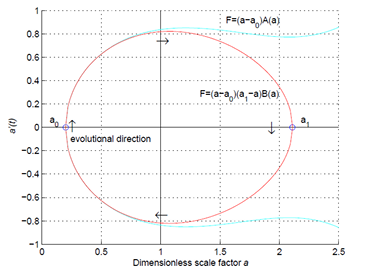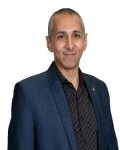


Full Issue
| View or download the full issue |
Issue release: 15 November 2023
In this paper, we define a new subclass of bi-univalent functions of complex order ∑q(τ,ζ;φ) which is defined by subordination in the open unit disc D by using ∇q𝐹 (ϑ) operator. Furthermore, using the Faber polynomial expansions, we get upper bounds for the coefficients of function belonging to this class. It is known that the calculus without the notion of limits is called q-calculus which has influenced many scientific fields due to its important applications. The generalization of derivative in q-calculus that is q-derivative was defined and studied by Jackson. A function 𝐹 ∈ 𝐴 is said to be bi-univalent in D if both 𝐹 and 𝐹 -1 are univalent in D. The class consisting of bi-univalent functions is denoted by σ. The Faber polynomials play an important role in various areas of mathematical sciences, especially in geometric function theory. The purpose of our study is to obtain bounds for the general coefficients |an|(n≥3)by using Faber polynomial expansion under certain conditions for analytic bi-univalent functions in subclass ∑q(τ,ζ;ϕ) and also, we obtain improvements on the bounds for the first two coefficients |a2|and|a3| of functions in this subclass. In certain cases, our estimates improve some of those existing coefficient bounds.
Issue release: 15 November 2023
This study explores a multiple-security, high-risk pricing model where the implied volatility has been portrayed through Generalized Wishart affine processes. The presence of dual dependency matrices distinctively characterizes this multifaceted model. These matrices encapsulate the relationship between the generalized Wishart processes and the evolving dynamics of several securities. The adaptability of the proposed model makes it a perfect fit for high-frequency market data, whether dealing with either long or short-term maturities of calls. The main objective paper is on its derivation and addressing the call option pricing problem within the context of the volatility mode using generalized Wishart stochastic. A combination of Fourier transforms techniques and perturbation methods are utilized, mainly focusing on pricing European call options. The model proposed in this study is theoretical and practical, showcasing the strong potential for real-world applications within the financial derivative market.
Issue release: 15 November 2023
Issue release: 15 November 2023
In this paper, by introducing predator-taxis into the diffusive predator-prey system with spatial memory, then we study the inhomogeneous spatial patterns of this system. Since in this system, the memory delay appears in the diffusion term, and the diffusion term is nonlinear, the classical normal form of Hopf bifurcation for the reaction-diffusion system with delay can’t be applied to this system. Thus, in this paper, we first derive an algorithm for calculating the normal form of Hopf bifurcation for this system. Then in order to illustrate the effectiveness of our newly developed algorithm, we consider the diffusive Holling-Tanner model with spatial memory and predator-taxis. The stability and Hopf bifurcation analysis of this model are investigated, and the direction and stability of Hopf bifurcation periodic solution are also studied by using our newly developed algorithm for calculating the normal form of Hopf bifurcation. At last, we carry out some numerical simulations to verify our theoretical analysis results, and two stable spatially inhomogeneous periodic solutions corresponding to the mode-1 and mode-2 Hopf bifurcations are found.
Issue release: 15 November 2023
The development of the number system has been a long and difficult process, and many landmark concepts and theorems have been put forward. By briefly reviewing the development of hypercomplex systems, the rules for constructing the unit elements are discussed. As a vector space defining multiplication, division, and norm of vectors, hypercomplex numbers synthesize the advantages of mathematical tools such as algebra, geometry, and analysis, faithfully describe the intrinsic properties of space-time and physical systems, and provide a unified language and a powerful tool for basic theories and engineering technology. In the application of hypercomplex numbers, the group-like properties of the basis vectors are the most important, and the zero factor has little influence on the algebraic operation. The multiplication table of the basis vectors fully describes the intrinsic properties of the hypercomplex system, and the matrix A constructed from the multiplication table satisfies the structure equation A2 = nA and thus obtains a set of faithful matrix representations of the basic elements. This paper also uses typical examples to show the simple and clear concepts and wide application of hypercomplex numbers. Therefore, hypercomplex numbers are worth learning in basic education and applying in scientific research and engineering technology.
Editor-in-Chief

Prof. Youssri Hassan Youssri
Cairo University, Egypt
Asia Pacific Academy of Science Pte. Ltd. (APACSCI) specializes in international journal publishing. APACSCI adopts the open access publishing model and provides an important communication bridge for academic groups whose interest fields include engineering, technology, medicine, computer, mathematics, agriculture and forestry, and environment.


 Open Access
Open Access
.jpg)

.jpg)
